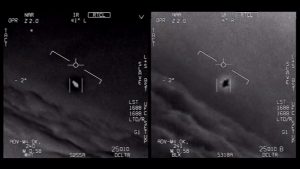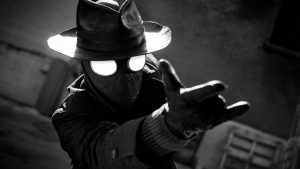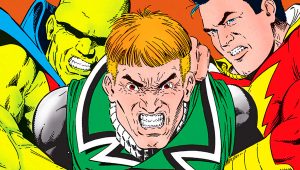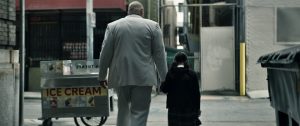
This article contains The Marvels spoilers.
Be there when it happens! So declared the final trailer for The Marvels, a 90-second spot that contains almost as many images of past MCU glories as it does shots from the actual movie it claims to promote. The trailer only slightly tips its hand toward the one thing that could be deemed universe-altering, a mid-credit sequence in which Monica Rambeau (Teyonah Parris) awakens in another universe, tended to by a variant of her mother Maria, now in the Binary persona, and Dr. Henry McCoy aka Beast (Kelsey Grammer) of the X-Men.
The X-Men have been a long time coming to the MCU—ever since Disney bought 20th Century Fox, which among other things brought the X-Men characters back under the Marvel umbrella after the film rights had been licensed to Fox in the 1990s. And yet, every onscreen hint and reference about the coming of the mutants has pointed to nostalgia for the live-action and animated versions of the characters developed in those ‘90s and 2000s, mostly at Fox. Beast in The Marvels and Charles Xavier in Doctor Strange in the Multiverse of Madness resemble their cartoon counterparts from the ‘90s TV series and are performed by Kelsey Grammer and Patrick Stewart, who first played those characters in 2006 and 2000, respectively. Meanwhile the first mention of the word “mutant” in the MCU, in a post-credit scene in Ms. Marvel, comes with a music cue from the animated series’ theme (the scene in The Marvels, conversely, uses a few bars from composer John Ottman’s X-Men theme in the movies X2 and X-Men: Days of Future Past).
Even nods that don’t involve the animated series still hew to the Fox movies, such as Hugh Jackman’s return as Wolverine for Deadpool 3 and the Pietro Maximoff fake-out with Evan Peters on WandaVision. At no point has the MCU suggested that the X-Men exist within its own universe, promising updated takes on the familiar team, let alone new mutants most associated with the X-Men (Namor, Mr. Immortal, and El-Aguila do not count). While reportedly Marvel Studios President Kevin Feige is acutely aware of the value he has in eventually rebooting the X-Men anew for the MCU, for the time being the company has revealed an eagerness to use the preexisting Fox versions of the characters to mine viewers’ nostalgia.
And that’s a problem because the MCU has a chance to do the X-Men right this time.
The Right X-Men For the Right Time
This is not to disparage the Fox X-Men franchise. While it ended with a whimper on the misguided Dark Phoenix and the forgotten The New Mutants, the Fox series played an integral role in bringing superheroes to the masses. When X-Men hit theaters in 2000, it was only the third Marvel movie ever made. It was preceded by the famously flawed Howard the Duck in 1985 and Blade in 1998. And while Blade is great and Howard the Duck has its charms, both were C-level characters from the comics. DC Comics had scored some hits with the Superman and Batman franchises, but both had fizzled with terrible fourth entries, Superman IV: The Quest for Peace (1987) and Batman & Robin (1997).
At the turn of the century, however, genre movies were beginning to follow the model set by The Matrix in 1999: leather-clad warriors in green or blue universes, stoically executing Kung fu moves. Action movies could not be further from the four-color soap opera of the comics—especially the pouch-centric, excessively-crosshatched style of ‘90s X-Men comics—and the general public still thought of superheroes as campy crusaders in the vein of the 1960s Batman series.
Furthermore, Fox had to sell to the general public a whole team of heroes who lived in a world where being incredibly good-looking and extremely gifted made one an outcast. With so much on its plate, it’s a miracle that X-Men worked at all. From its audacious opening with young Magneto in a Nazi concentration camp located in Poland to its black leather fight sequences, X-Men relied on the charisma and gravitas of established actors Ian McKellen and Patrick Stewart, along with newcomer Hugh Jackman, to modest commercial success. It was enough to get the greenlight for the far more profitable sequel X2: X-Men United (2003).
To be sure, much of the success of X-Men and X2 came partially from deviating from the comics. Instead of a short, hairy, ugly Canadian, the tall, handsome, and hairless Australian musical theater whizz, Hugh Jackman, barely hid Wolverine’s wounded dignity below his scowl. Complex characters Cyclops and Storm became paper thin, reduced to powers and broad types to make room for audience surrogates Wolverine and Rogue.
As the rise of the MCU made audiences more accepting of traditional superheroes, the X-Men franchise made more allowances to the source material by bringing in knotty characters like Apocalypse and Sebastian Shaw, and even put the team in a more colorful uniform for its final outing in Dark Phoenix.
And yet, for everything the Fox X-Men franchise did right, it only scratched the surface of what the X-Men can do.
The Power of the X-Men
Since the launch of the All-New, All-Different team in 1975’s Giant Size X-Men #1, the X-Men have been soap opera, space opera, bildungsroman, and social allegory, sometimes all at once. The mutant metaphor has come to represent every oppressed and rejected class, capturing both the feeling of empowerment and terror that comes with not understanding one’s own body, and more importantly the adverse reaction that society has to it.
The Fox movies only glanced toward these issues. The characters do frequently discuss the difficulties of fighting to help those who fear and hate mutants, but it often occurs along lines of evolution as opposed to any sort of gender, racial, or sexual identity—Auschwitz opening notwithstanding. The closest example occurs in X2: X-Men United when Nightcrawler asks Mystique why a shape changer would keep her blue, scaly appearance instead of taking the form of a beautiful woman. She responds, “Because we shouldn’t have to.”
More pointedly, the parents of Bobby Drake respond with shock when they learn about their son’s mutant ability to control ice. “Couldn’t you try not being a mutant?” his mother asks, recalling many an ignorant question queer people have received from family members.
By the end of the franchise, the X-Men social consciousness was reduced to Mystique, now more than happy to look like Hollywood actress Jennifer Lawrence 95 percent of the time, quipping that the team should be called “X-Women.”
Contrast that to what scholar Ramzi Fawaz calls the “feminist cosmology” in depictions of Storm and the Phoenix during the heyday of Chris Claremont and John Byrne’s run in the late 1970s and early ‘80s. Contrast that to numerous queer characters who found a home in the X-Men, from antagonists Mystique and Destiny to the development of the first openly homosexual superhero Northstar to bisexual characters such as Kitty Pryde. Contrast that to the condemnation of religious bigotry in the graphic novel God Loves, Man Kills. The current Krakoa storyline in X-Men stories explores the challenges in self-rule by previously oppressed peoples.
The franchise certainly hasn’t been perfect. Both The New Mutants (Tom Corsi and Sharon Friedlander) and Uncanny X-Men (Betsy Braddock and Kwannon) featured storylines in which white people became people of color; Jean Grey gives a workshop on how to not support a closeted person when she outs Iceman against his will in the comics; no one raised an eye at underaged Kitty Pryde dating legal adult Colossus; and don’t even mention Stan Lee’s ignorant comparison of Magneto to Malcolm X.
Still, the X-Men have been on the vanguard of Marvel’s promise of “the world outside your window.” For decades, the franchise has provided a perfect combination of soap opera drama, high-concept superhero adventure, and social consciousness.
Marvel Needs All-New, All-Different X-Men
To be fair, this may be all ado about nothing. Each of these Fox callbacks may be part of a holding pattern, satisfying fans while giving Feige time to decide how to best integrate the team into the MCU. Reports have revealed that Feige started taking pitches for an X-Men movie as soon as studios accepted the WGA’s demands. Now that studios have also agreed to terms with SAG-AFTRA, Marvel may begin casting and working on a team in earnest.
However, the emphasis on the multiverse in recent Marvel movies with the return of Charlie Cox and Vincent D’Onofrio in Daredevil, and the success of the last Avengers-level hit Spider-Man: No Way Home certainly suggests that Feige and company may be at least considering reusing familiar faces for his X-Men.
Furthermore, the MCU seems like a poor place to pin one’s hope for trenchant social commentary. The franchise has demonstrated a willingness to forgo its parent company’s empty gestures toward equality, infusing two Black Panther movies with anti-colonial rage, turning the Department of Damage Control into a civil rights-violating analog to the civil rights violating Department of Homeland Security, and telling a refugee allegory in Captain Marvel. But for each of these progressive moments, one can also find centrist and even conservative ideology, whether it be the fantasy of clean drone warfare in Iron Man or the muddled messages of The Falcon and the Winter Soldier and Secret Invasion.
Nonetheless, if any franchise can do everything great about superheroes, not just the cool powers and inventive action, but also the rambling soap opera and, yes, social commentary it’s the X-Men. But that can only happen if Marvel leaves the Fox team off in some alternate reality and starts changing Professor X, Wolverine, and Magneto into new, more relevant, and better versions. After all, if there’s anything the original X-Men taught us, it’s that mutation is the key to our evolution.
The post Marvel Needs to Leave the Fox X-Men Behind for Good appeared first on Den of Geek.





